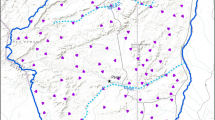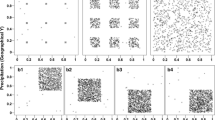Abstract
Field monitoring can vary from simple volunteer opportunistic observations to professional standardised monitoring surveys, leading to a trade-off between data quality and data collection costs. Such variability in data quality may result in biased predictions obtained from species distribution models (SDMs). We aimed to identify the limitations of different monitoring data sources for developing species distribution maps and to evaluate their potential for spatial data integration in a conservation context. Using Maxent, SDMs were generated from three different bird data sources in Catalonia, which differ in the degree of standardisation and available sample size. In addition, an alternative approach for modelling species distributions was applied, which combined the three data sources at a large spatial scale, but then downscaling to the required resolution. Finally, SDM predictions were used to identify species richness and high quality areas (hotspots) from different treatments. Models were evaluated by using high quality Atlas information. We show that both sample size and survey methodology used to collect the data are important in delivering robust information on species distributions. Models based on standardized monitoring provided higher accuracy with a lower sample size, especially when modelling common species. Accuracy of models from opportunistic observations substantially increased when modelling uncommon species, giving similar accuracy to a more standardized survey. Although downscaling data through a SDM approach appears to be a useful tool in cases of data shortage or low data quality and heterogeneity, it will tend to overestimate species distributions. In order to identify distributions of species, data with different quality may be appropriate. However, to identify biodiversity hotspots high quality information is needed.







Similar content being viewed by others
References
Araújo MB, New M (2007) Ensemble forecasting of species distributions. Trends Ecol Evol 22:42–47
Araújo MB, Thuiller W, Williams PH et al (2005) Downscaling European species atlas distributions to a finer resolution: implications for conservation planning. Global Ecol Biogeogr 14:17–30
Boakes EH, McGowan PJK, Fuller RA et al (2010) Distorted views of biodiversity: spatial and temporal bias in species occurrence data. PLoS Biol 8:e1000385
Braunisch V, Suchant R (2010) Predicting species distributions based on incomplete survey data: the trade-off between precision and scale. Ecography 33:826–840
Brotons L, Mañosa S, Estrada J (2004a) Modelling the effects of irrigation schemes on the distribution of steppe birds in Mediterranean farmland. Biodivers Conserv 13:1039–1058
Brotons L, Thuiller W, Araújo MB et al (2004b) Presence–absence versus presence-only modelling methods for predicting bird habitat suitability. Ecography 27:437–448
Brotons L, Herrando S, Pla M (2007) Updating bird species distribution at large spatial scales: applications of habitat modelling to data from long-term monitoring programs. Diversity Distrib 13:276–288
Burfield I (2004) Birds in Europe. Population estimates, trends and conservation status. Birdlife International
Conrad CC, Hilchey KG (2011) A review of citizen science and community-based environmental monitoring: issues and opportunities. Environ Monit Assess 176:273–291
Danielsen F, Burgess ND, Balmford A (2005) Monitoring matters: examining the potential of locally-based approaches. Biodivers Conserv 14:2507–2542
Elith J, Graham CH, Anderson RP et al (2006) Novel methods improve prediction of species’ distributions from occurrence data. Ecography 29:129–151
Elith J, Kearney M, Phillips SJ (2010) The art of modelling range-shifting species. Methods Ecol Evol 1:330–342
Engel SR, Voshell JR (2002) Volunteer biological monitoring: Can it accurately assess the ecological condition of streams? Am Entomol 48:164–177
Estrada J, Pedrocchi V, Brotons L et al. (2004) Atles dels ocells nidificants de Catalunya 1999–2002. Institut Català d’Ornitologia (ICO)/Lynx Edicions, Barcelona
Feeley KJ, Silman MR (2011) Keep collecting: accurate species distribution modelling requires more collections than previously thought. Diversity Distrib 1–9
Green RE, Cornell SJ, Scharlemann JPW et al (2005) Farming and the fate of wild nature. Science 307:550–555
Gregory RD, van Strien A, Vorisek P et al (2005) Developing indicators for European birds. Phil Trans R Soc B 360:269–288
Guisan A, Graham CH, Elith J et al (2007) Sensitivity of predictive species distribution models to change in grain size. Diversity Distrib 13:332–340
Hernández PA, Graham CH, Master LL et al (2006) The effect of sample size and species characteristics on performance of different species distribution modeling methods. Ecography 29:773–785
Herrando S, Brotons L, Estrada J et al (2008) The Catalan common bird survey (SOCC): a tool to estimate species population numbers. Revista Catalana d’Ornitologia 24:138–146
Herrando S, Brotons L, Estrada J et al (2011) Methodology. In: Herrando S, Brotons L, Estrada J et al (eds) Atles dels ocells de Catalunya a l’hivern 2006–2009. Institut Català d’Ornitologia/Lynx Edicions, Barcelona
Hirzel A, Guisan A (2002) Which is the optimal sampling strategy for habitat suitability modelling. Ecol Model 157:331–341
Kery M, Royle JA, Schmid H et al (2010) Site-occupancy distribution modeling to correct population-trend estimates derived from opportunistic observations. Conserv Biol 24:1388–1397
Liu C, Berry PM, Dawson TP et al (2005) Selecting thresholds of occurrence in the prediction of species distributions. Ecography 28:385–393
Lobo JM, Jiménez-Valverde A, Real R (2008) AUC: a misleading measure of the performance of predictive distribution models. Global Ecol Biogeogr 17:145–151
Mccarthy KP, Fletcher RJ, Rota CT, Hutto RL (2012) Predicting species distributions from samples collected along roadsides. Conserv Biol 26:68–77
McPherson JM, Jetz W, Rogers DJ (2006) Using coarse-grained occurrence data to predict species distributions at finer spatial resolutions—possibilities and limitations. Ecol Model 192:499–522
Munson MA, Caruana R, Fink D et al (2010) A method for measuring the relative information content of data from different monitoring protocols. Methods Ecol Evol 1:263–273
Ninyerola M, Pons X, Roure JM (2005) Atlas climático digital de la Península Ibérica: metodología y aplicaciones en bioclimatología y geobotánica ISBN 932860-8-7. Autonomous University of Barcelona, Bellaterra, p 44
Pearce J, Ferrier S (2000) Evaluating the predictive performance of habitat models developed using logistic regression. Ecol Model 133:225–245
Pearson RG, Raxworthy CJ, Nakamura M, Peterson AT (2007) Predicting species distributions from small numbers of occurrence records: a test case using cryptic geckos in Madagascar. J Biogeogr 34:102–117
Peterson AT (2006) Uses and requirements of ecological niche models and related distributional models. Biodivers Inform 3:59–72
Phillips SJ, Dudik M (2008) Modeling of species distributions with Maxent: new extensions and a comprehensive evaluation. Ecography 31:161–175
Phillips SJ, Dudik M, Schapire RE (2004) A maximum entropy approach to species distribution modeling. Banff, Canada
Phillips SJ, Anderson RP, Schapire RE (2006) Maximum entropy modeling of species geographic distributions. Ecol Model 190:231–259
Phillips SJ, Dudík M, Elith J et al (2009) Sample selection bias and presence-only distribution models: implications for background and pseudo-absence data. Ecol Appl 19:181–197
Pons X (1996) Estimación de la radiación Solar a partir de modelos digitales de elevaciones. Propuesta metodológica. In: Juaristi J, Moro I (eds) VII coloquio de geografía cuantitativa. Sistemas de Información Geográfica y Teledetección, Vitoria
Roberts RL, Donald PF, Fisher IJ (2005) Wordbirds: developing a web-based data collection system for the global monitoring of bird distribution and abundance. Biodivers Conserv 14:2807–2820
Roberts RL, Donald PF, Green RE (2007) Using simple species lists to monitor trends in animal populations: new methods and a comparison with independent data. Anim Conserv 10:332–339
Sardà-Palomera F, Vieites DR (2011) Modelling species’ climatic distributions under habitat constraints: a case study with Coturnix coturnix. Ann Zool Fennici 48:147–160
Schmeller DS, Henry PY, Julliard R et al (2009) Advantages of volunteer-based biodiversity monitoring in Europe. Conserv Biol 23:307–316
Schreuder HT, Gregoire TG, Weyer JP (2001) For what applications can probability and non-probability sampling be used? Environ Monit Assess 66:281–291
Segurado P, Araújo MB (2004) An evaluation of methods for modelling species distributions. J Biogeogr 13:1555–1568
Snall T, Kindvall O, Nilsson J et al (2011) Evaluating citizen-based presence data for bird monitoring. Biol Conserv 144:804–810
Soberon J, Peterson AT (2004) Biodiversity informatics: managing and applying primary biodiversity data. Philos Trans R Soc Lond Ser B 359:689–698
Stem C, Margoluis R, Salafsky N et al (2005) Monitoring and evaluation in conservation: a review of trends and approaches. Conserv Biol 19:295–309
Stockwell DRB, Peterson AT (2002) Effects of sample size on accuracy of species distribution models. Ecol Model 148:1–13
Vaughan IP, Ormerod SJ (2003) Improving the quality of distribution models for conservation by addressing shortcomings in the field collection of training data. Conserv Biol 17:1601–1611
Viñas O, Baulies X (1995) 1:250 000 Land-use map of Catalonia (32 000 km2) using multi-temporal landsat-TM data. Int J Remote Sens 16:129–146
Wisz MS, Hijmans RJ, Peterson AT et al (2008) Effects of sample size on the performance of species distribution models. Divers Distrib 14:763–773
Witte JM, He F, Groen CLG (2008) Grid origin affects scaling of species across spatial scales. Global Ecol Biogeogr 17:448–456
Zaniewski AE, Lehmann A, Overton JMcC (2002) Predicting species spatial distributions using presence-only data: a case study of native New Zealand ferns. Ecol Model 157:261–280
Acknowledgments
This study was funded by the EU FP7 SCALES project (“Securing the Conservation of biodiversity across Administrative Levels and spatial, temporal and Ecological scales”; project #226852).
Author information
Authors and Affiliations
Corresponding author
Rights and permissions
About this article
Cite this article
Sardà-Palomera, F., Brotons, L., Villero, D. et al. Mapping from heterogeneous biodiversity monitoring data sources. Biodivers Conserv 21, 2927–2948 (2012). https://doi.org/10.1007/s10531-012-0347-6
Received:
Accepted:
Published:
Issue Date:
DOI: https://doi.org/10.1007/s10531-012-0347-6






